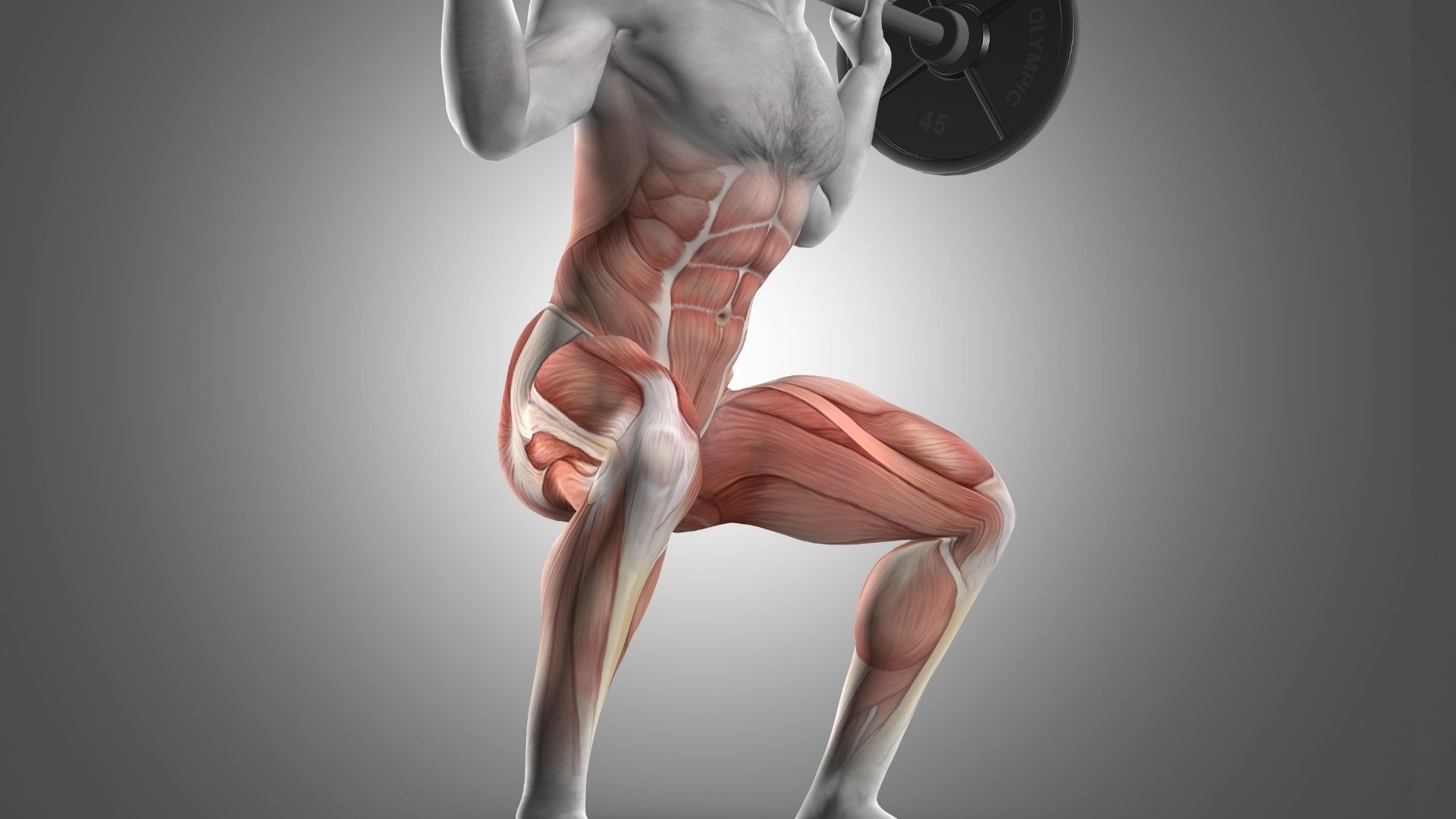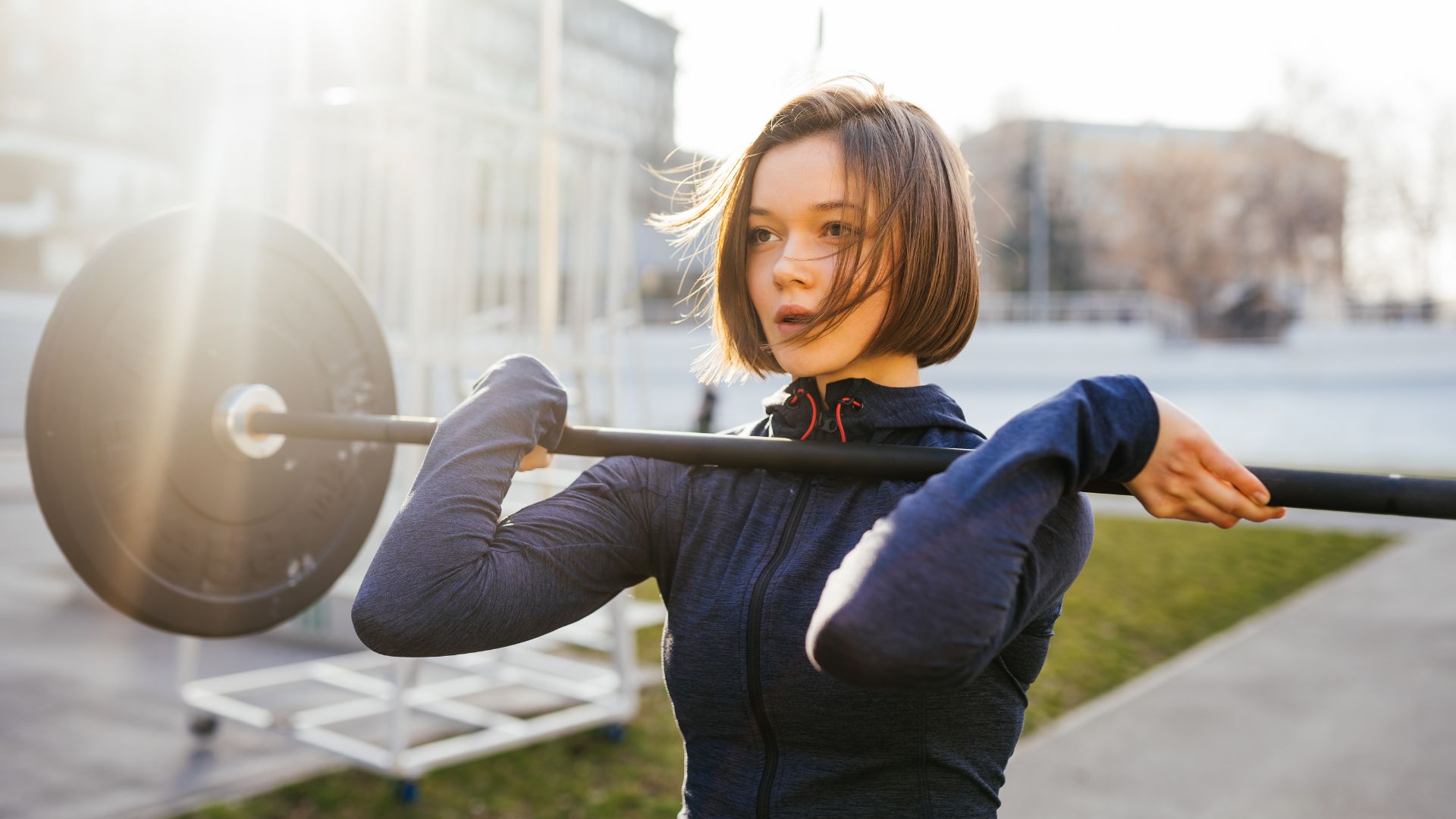Squats are a fundamental exercise in any leg training regimen. They engage multiple muscle groups, including the quadriceps, hamstrings, glutes, and core.
Many individuals experience a satisfying pump in their quads after performing squats, but have you ever wondered why this happens? In this article, we explore the physiological mechanisms behind the quad pump and offer insights into maximizing its effects for optimal leg gains.
Squats engage your quadriceps, causing them to contract and generate force, leading to increased blood flow and a pump sensation. This temporary swelling is accompanied by a feeling of tightness and fullness in the muscle. Squats also recruit and activate the quadriceps muscle fibers, enhancing the pump effect. Remember, while the pump is not indicative of long-term gains, it can be gratifying during workouts.
Quadriceps are heavily engaged in squats.
Here’s a detailed explanation of why squats can make you feel a pump in your quads, along with examples:
Squats are a compound exercise that primarily targets the quadriceps muscles, located on the front of your thighs.
This muscle group consists of four main muscles: the rectus femoris, vastus lateralis, vastus medialis, and vastus intermedius. When you perform squats, these muscles are heavily engaged and work hard to lift the weight or your body.
During a squat, your quadriceps undergo concentric contractions. Concentric contractions occur when a muscle shortens as it generates force to extend your knees and straighten your legs.
In the case of squats, your quadriceps contract to push against the resistance provided by the weight or your body, allowing you to rise back up from a squatting position.
This movement places a significant load on your quadriceps, stimulating increased blood flow to the muscle fibers.
The increased blood flow is a result of vasodilation, a process where the blood vessels leading to the quadriceps dilate or widen.
This dilation allows more blood to flow into the muscle, delivering a higher volume of oxygen and nutrients while also removing waste products like carbon dioxide and lactic acid.

Increased oxygen supply.
The increased oxygen supply is crucial for the quadriceps’ energy production during intense exercise. It helps fuel the muscle cells, allowing them to generate the necessary force for the contraction.
Additionally, the increased nutrient delivery supports the repair and growth of muscle tissue, contributing to muscle adaptation over time.
The pump sensation you feel in your quads during and after squats is a result of this increased blood flow. As the blood vessels widen, more blood is directed to the quadriceps, causing them to swell temporarily.
This swelling creates a feeling of tightness or fullness in the muscle and may lead to a slight increase in muscle size, albeit transiently.
Furthermore, squats activate and recruit the muscle fibers within the quadriceps. Muscle fiber recruitment refers to the process of involving a larger number of muscle fibers to meet the demands of the exercise.
Squats require substantial force production, and as a result, they recruit a higher percentage of the quadriceps’ muscle fibers to generate the required power. This recruitment contributes to the pump sensation you experience, as more muscle fibers are actively engaged during the exercise.
For example.
To better understand this concept, consider the following example:
Imagine you are performing a set of barbell squats with a challenging weight. As you descend into the squat, your quadriceps lengthen under tension, preparing for the subsequent concentric contraction.
As you push against the resistance and extend your knees, your quadriceps contract forcefully, generating significant force to lift the weight or your body back up.
This intense contraction triggers the release of chemicals that promote vasodilation, leading to increased blood flow to the quadriceps.
During the set, you start to notice a gradual tightness and fullness in your quads. This sensation is the pump, indicating that your quadriceps are receiving a substantial blood supply, oxygen, and nutrients to sustain the demanding exercise.
You may also observe a temporary increase in the size of your quads due to the swelling caused by the elevated blood flow.
Additionally, as you continue performing squats, the muscle fiber recruitment within your quadriceps increases.
This recruitment enhances the muscle’s overall strength and power output, leading to improved performance and potential long-term muscle development.
In summary, squats make you feel a pump in your quads due to the combination of increased blood flow, oxygen, and nutrient delivery to the muscle fibers, as well as the recruitment of more muscle fibers during the exercise.
The pump is a temporary physiological response and can provide a sense of satisfaction and accomplishment during your workout.
Remember, if you experience any discomfort or pain during squats or any other exercise, it’s essential to consult with a qualified fitness professional or healthcare provider to ensure proper technique and prevent injuries.
Here’s a table summarizing the reasons, how, when, where, examples, and considerations related to squats:
| Reason | How | When | Where | Example | Considerations |
|---|---|---|---|---|---|
| Muscle Work | Quadriceps | During lower body | Gym, home, or outdoors | Barbell squats with added weight | Ensure proper form and technique to prevent injuries |
| Increased Blood Flow | Vasodilation | During concentric contractions | Any squatting environment | Bodyweight squats | Gradually increase intensity to avoid overexertion |
| Oxygen & Nutrient Delivery | Increased blood flow | During and after exercise | Fitness facility or home | Squats with dumbbells or kettlebells | Maintain proper breathing throughout the exercise |
| Waste Removal | Increased blood flow | During and after exercise | Any suitable location | Bodyweight squats with high repetitions | Stay hydrated to support efficient waste removal |
| Muscle Fiber Recruitment | Activation of muscle fibers | During the exercise | Gym or home gym | Barbell squats with progressive overload | Start with lighter weights and gradually increase |
| Sense of Accomplishment | Pump sensation | During or after exercise | Fitness facility or home | Completing a challenging set of squats | Focus on your own progress and avoid comparing |
These points provide an overview of the reasons behind squats, how they affect the body, when and where they can be performed, examples of different squat variations, and considerations to keep in mind for safety and effectiveness.
Remember, consulting with a qualified fitness professional or healthcare provider is advisable to ensure proper form, technique, and individualized guidance for your specific goals and needs.
Conclusion.
In conclusion, squats can result in a pump sensation in your quadriceps due to various physiological factors. When you perform squats, your quadriceps muscles undergo concentric contractions, generating force to extend your knees and straighten your legs.
This places a significant load on the quadriceps, stimulating increased blood flow to the muscle fibers through vasodilation.
The increased blood flow delivers more oxygen, nutrients, and removes waste products from the muscles. This process leads to a feeling of tightness or fullness in the quadriceps, commonly known as the pump.
Additionally, squats activate and recruit a higher percentage of muscle fibers within the quadriceps, contributing to the pump sensation.
The pump is a temporary response and is not directly correlated with long-term muscle growth or strength gains.
However, it can provide a satisfying feeling and serve as an indication of the muscles being actively engaged and worked during the exercise.
While experiencing a pump in your quads during squats is normal, it is essential to prioritize proper form and technique. If you experience any discomfort or pain, it is advisable to seek guidance from a qualified fitness professional or healthcare provider to prevent injuries and ensure an effective and safe workout.
Incorporating squats into your fitness routine can provide numerous benefits, including strengthening and developing your quadriceps muscles, improving overall lower body strength, and enhancing functional movement. Remember to listen to your body, progress gradually, and prioritize proper form to maximize the effectiveness and safety of your squatting exercises.

Hey there, it’s Mike Rrsq, the Editor-in-Chief over at Jsquat.com, and I’m absolutely obsessed with all things squat fitness! I’ve been lucky enough to get some serious recognition for my work in this field. With a solid background in the fitness and wellness industry, I’ve been there right from the get-go, helping shape this website into what it is today.
You see, I’m not just the boss around here; I’m also a passionate contributor. I love sharing my insights through my articles, and trust me, they’re not your run-of-the-mill stuff. Each piece I write is a labor of love, filled with my expertise and real-world experience in the fitness universe. So, if you’re into fitness and looking for some inspiration, you’re in the right place!

